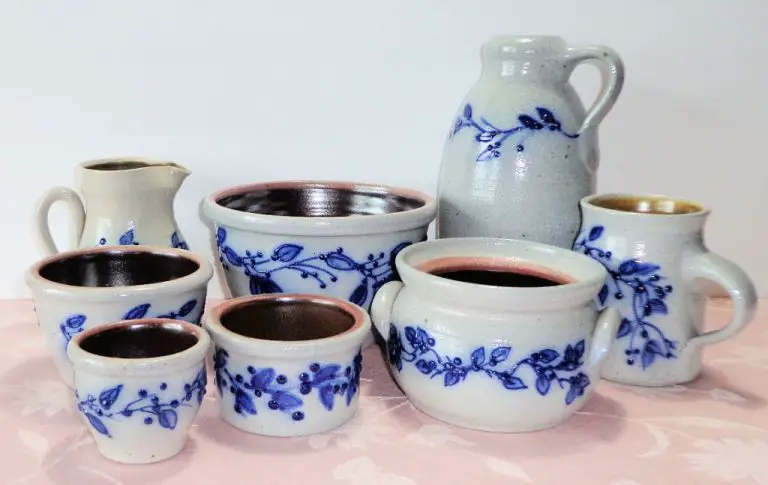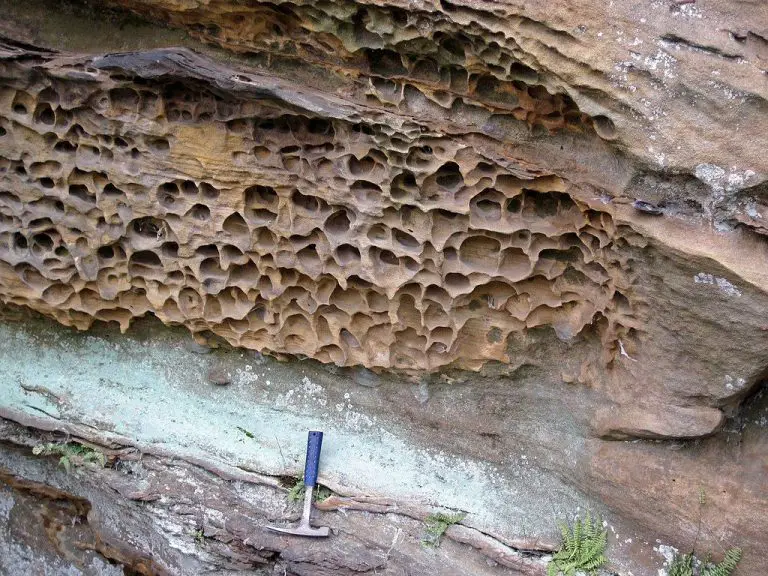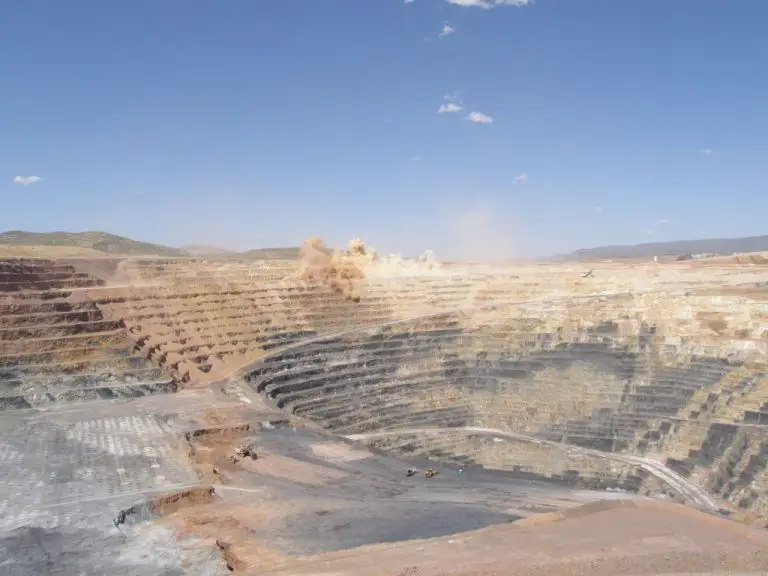What Is The Strongest Clay?
Clay is a type of fine-grained natural soil material that consists of mostly tiny mineral particles less than 2 micrometers in size. There are many different types and compositions of clay, but in general, clays have some basic properties in common such as plasticity, high specific surface area, and high cation exchange capacity. When it comes to the strength of clay, this refers to a clay’s resistance to deformation under an applied force. The strength of clay is an important property to consider for construction, pottery, and other applications. Different types of clay can vary widely in terms of strength. The mineral composition, particle size distribution, and degree of compaction can all affect the ultimate strength of clay. In this article, we will provide an overview of the major types of clay and discuss the factors that contribute to making some clays stronger than others.
Measuring Clay Strength
There are several ways to measure and compare the strength of different clays. Two key measures used by materials scientists and engineers are the modulus of rupture and modulus of elasticity.
The modulus of rupture is a measure of the maximum load-bearing capacity of the clay when bent. It determines the point at which the clay will fracture or break when flexed. A higher modulus of rupture indicates stronger, more rigid clay.
The modulus of elasticity measures the clay’s resistance to being deformed elastically. The higher the modulus of elasticity, the stiffer the clay is and the more force it can withstand without permanent deformation. This makes clays with a higher modulus of elasticity generally stronger.
There are several factors that can affect the strength of clay, including:
- Mineral composition – Some clay minerals like illite and smectite have weaker bonding between particles.
- Firing temperature – Higher firing makes the clay denser and increases strength.
- Water content – Wet clay is softer and weaker than dry clay.
- Compaction – Well-compacted clay is stronger due to fewer pores and voids.
- Clay particle size – Smaller particles can pack more tightly for increased density and strength.
By measuring and comparing the modulus of rupture, modulus of elasticity, and accounting for these factors, the relative strength of different clays can be determined.
Kaolinite Clay
Kaolinite clay is a very common clay mineral. It’s composed primarily of the mineral kaolinite which has a chemical composition of Al2Si2O5(OH)4. Kaolinite clay forms over long periods of time as granite and feldspar slowly weather away. It is white in color and has a low shrink-swell capacity.
Some key properties of kaolinite clay are:
- Low plasticity and sticky when wet
- Low dry strength and toughness
- Smooth and silkly texture
- Fires to white or near white color
Kaolinite clay has many uses including:
- Ceramics – used to make porcelain and bone china
- Paper – provides glossy coating and ink retention
- Cosmetics – added to face masks and scrubs
- Medicine – can treat diarrhea and other digestive issues
- Fiberglass production
- Refractory bricks
It’s versatility and abundance make kaolinite one of the most utilized clays across various industries.
Illite Clay
Illite clay is made up of thin platy minerals and has properties that place it between kaolinite and smectite clays. The composition of illite includes aluminum, silicon, oxygen, hydrogen, potassium, and water. The molecular structure of illite clay layers allows water molecules between the stacked clay layers.
The properties of illite clay include moderate plasticity and dry strength, low shrink-swell capacity, and low cation exchange capacity. When mixed with water, illite clay has good bonding properties and forms a smooth, elastic, and strong clay body. Illite clay can be fired to high temperatures around cone 10.
Common uses of illite clay include:
- Stoneware and porcelain bodies – Illite is an essential component for these high-fire clays, providing plasticity and strength.
- Earthenware bodies – Small amounts of illite improve workability and dry strength.
- Slip casting – Illite clays help control shrinkage in slip casting.
- Glazes – Illite provides aluminum and fluxing oxides for glazes.
Illite’s combination of properties makes it a versatile clay for a variety of applications. The composition and platelet structure provide workability, strength, and high temperature stability. Illite clays are mined around the world and used frequently in clay bodies and ceramic materials.
Smectite Clay
Smectite clay, sometimes referred to as montmorillonite clay, is composed of extremely small particles that expand significantly when water is added. The ability of smectite clays to absorb large amounts of water and to expand makes them useful for many industrial applications.
Smectite has a 2:1 crystal structure, meaning it has two silica tetrahedral sheets sandwiching an aluminum octahedral sheet. The small size of the particles and the charge deficiencies in the crystal structure cause smectite to have a very high specific surface area. This allows the clay to absorb significant amounts of water between the layers, causing them to greatly expand in what is known as interlayer swelling.
The expansive properties of smectite allow it to bind with other materials to create cohesive and plastic properties. Some common uses of smectite clays include:
- Drilling mud – Absorbs water and increases viscosity
- Foundry sand binder – Binds sand particles together when water is added
- Animal feed pelletizer – Acts as a binder when pressure and steam applied
- Ceramics – Provides plasticity and strength when fired
- Absorbents – Absorbs oils, greases, and animal waste
Smectite clays have very low permeability, making them useful as liners for ponds and landfills. Their absorptive properties also allow them to encapsulate toxic materials safely. The high cation exchange capacity of smectites enables them to absorb nutrients for slow release as fertilizers.
While smectite clays have many useful properties, their expansiveness requires special consideration in construction applications. Foundations, roads, and earthworks must account for the swelling potential of smectite clays to avoid structural damage.
Ball Clay
Ball clay is a type of kaolinite clay that is composed primarily of kaolinite, mica, feldspars, and quartz. It has high plasticity and strength when wet, making it ideal for shaping and molding. Ball clay also has a low content of iron and alkali metals, resulting in a light cream or white firing color.
The fine particle size and plasticity of ball clay enable it to provide strength, plasticity, and workability in clay bodies and ceramic glazes. When added to other clays, ball clay acts as a binding agent. It is able to counteract drying shrinkage, improving the plasticity and green strength of the body. The unfired strength allows ceramic ware to maintain its shape as it dries.
Ball clay has many applications and uses in ceramics and pottery. It is an essential ingredient in ceramic bodies and is used in sanitaryware, wall and floor tiles, and ceramic sculpture. In glazes, ball clay helps suspend the glaze ingredients, improves application, and acts as a binding agent. It is also commonly used in bodies for porcelain, whiteware, pottery, and ceramic artware. The purity and light firing color make it ideal for creating white and light-colored ceramic products.
Fire Clay
Fire clay is a type of clay that can withstand extremely high temperatures, ranging from 1400°C to 1600°C and higher, without deforming. It gets its name because it is used widely in lining furnaces and kilns for firing ceramics, bricks and other refractory materials. Fire clay has a high content of alumina and silica, giving it a high degree of refractoriness or pyrometric cone equivalent (PCE).
The typical composition of fire clay consists of 50-55% silica (SiO2), 20-30% alumina (Al2O3), and 15-25% water. It may also contain minor amounts of iron, alkali, and alkaline earth elements. The high silica and alumina content gives fire clay high heat resistance and low shrinkage. When fired at high temperatures, the alumina promotes vitrification, transforming the clay into a hard material.
Thanks to its refractory properties, fire clay has many applications and uses. It is used to line furnaces, kilns, fireboxes and fireplaces for melting or firing metals, glass, ceramics and more. It is also used to make crucibles and ceramic refractories such as firebricks. In addition, fire clay is an essential ingredient in manufacturing sanitaryware, electrical porcelains and ceramic tiles. Other uses include molded refractory shapes, brake linings and foundry applications.
Bentonite
Bentonite is a type of clay formed from volcanic ash. It is composed primarily of smectite minerals such as montmorillonite as well as other clay minerals. Bentonite often forms from weathering of volcanic ash in seawater, which converts the volcanic glass present in the ash to clay minerals.
Bentonite is known for its ability to absorb large amounts of water and expand significantly. This makes it useful as a sealant, binding agent, and lubricant. When mixed with water, bentonite can expand up to 15 times its dry size. The expansive properties allow bentonite to fill cracks and crevices, making it an effective sealant.
Bentonite also has an overall negative electrical charge, giving it a strong attraction to positively charged molecules and surfaces. This allows it to act as an adsorbent, soaking up ions, nutrients, and other molecules from solutions. Its adsorbent capabilities make bentonite useful for clarifying wines and beers, absorbing odor and moisture, and binding chemicals in applications ranging from cat litter to oil purification.
The combination of water absorption, swelling, and adsorption properties give bentonite many uses. Major applications include:
- Drilling mud – The viscosity and gel strength makes bentonite ideal for lubricating and cooling drill bits.
- Foundry sand – Bentonite binds the sand particles into molds and cores for metal casting.
- Iron ore pelletizing – Facilitates ball formation and improves product flowability.
- Civil engineering – Seals earth dams and ponds, lines canals, etc.
- Wastewater treatment – Removes heavy metals and other contaminants.
- Pet waste absorbent – Absorbs and deodorizes animal waste.
- Sealants – Plug holes, cracks, and fissures in wells, tunnels, ponds, etc.
Comparing Clay Strengths
When comparing the strength of different clays, one important measurement is the modulus of rupture. This measures the load a clay can withstand before breaking or cracking. Here’s a comparison of the modulus of rupture for some common clays:
| Clay Type | Modulus of Rupture |
| Kaolinite | 5500-8000 psi |
| Illite | 4000-5500 psi |
| Smectite | 1000-2000 psi |
| Ball Clay | 3000-5000 psi |
| Fire Clay | 5000-7000 psi |
| Bentonite | 700-1500 psi |
Based on the modulus of rupture, kaolinite clay is the strongest, followed by fire clay and illite clay. The high strength makes kaolinite well-suited for applications like porcelain and stoneware. Fire clay is commonly used for refractories that must withstand high heat. The weaker smectite and bentonite clays are better for bonding and plasticity in applications like litter and drilling mud.
Conclusion
In summary, when evaluating the strongest type of clay, it depends on the intended functional use. For strength and hardness at high temperatures and refractory applications, fire clay is generally the strongest due to its high alumina content. For plasticity and workability, ball clay and bentonite are strongest. For everyday pottery and ceramic uses, stoneware clays with balanced kaolinite, illite and smectite contents exhibit a good combination of workability and fired strength.
Overall, fire clay stands out as the strongest type of clay thanks to its refractory properties and resistance to heat damage and thermal shock. This unique combination of strength characteristics makes fire clay the premier choice for high temperature kilns, furnaces and firebrick linings. While other clays have their strengths, fire clay’s exceptional hardness and durability at high temperatures set it apart as the strongest clay for functional applications.




